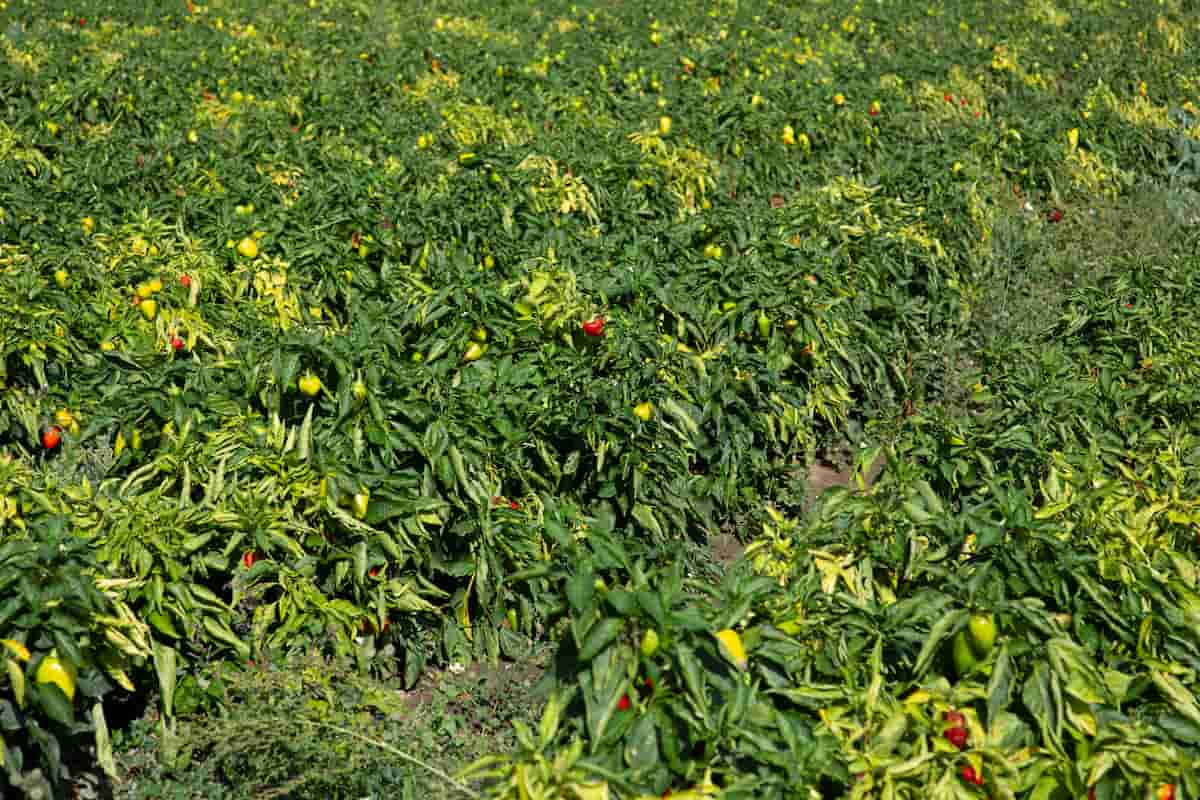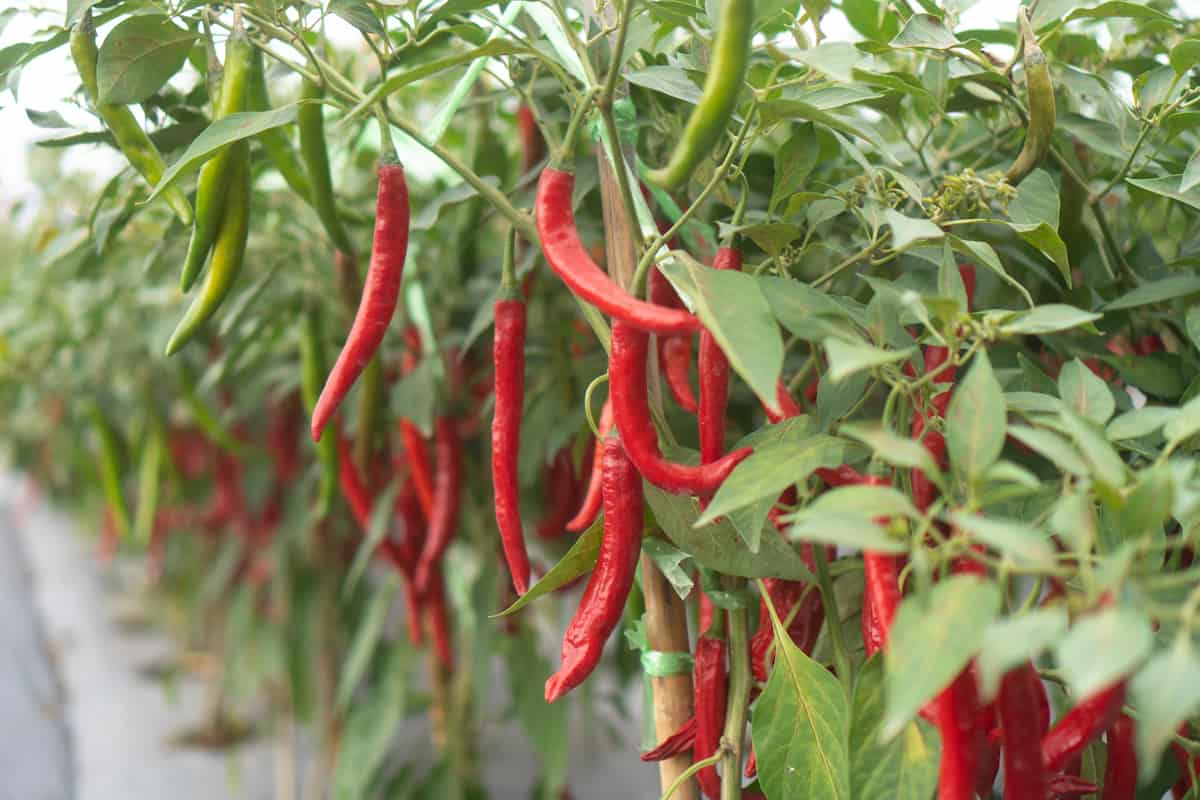The Chilli Root Grub Nematode, Holotrichia serrata, belonging to the Family Scarabaeidae of the Order Coleoptera, is a severe agricultural pest that causes significant yield losses and reduces quality of crops worldwide. The larvae are active during the night and feed on the roots of chilli plants, causing considerable damage to the crop. They are responsible for most of the damage to chilli crops.

Several methods, such as crop rotation, organic fertilizers, and nematodes, can also be effective in controlling chilli root grub infestations. To effectively manage this pest, it is essential to understand its life cycle, its preferred habitats, and the best methods for controlling it. This article will provide an overview and discussion of the Chilli Root Grub Nematode Pest in Chilli crops, including its symptoms, identification techniques, and control.
Chilli Root Grub Nematode Pest Management
Life Cycle of Chilli Root Grub Nematode Pest in Chilli Crop
The life cycle of the Chilli Root Grub Nematode pest has four stages. They are egg, larva, pupa, and adult. The life cycle begins when the adult female beetle lays its eggs in the soil near the roots of chilli plants. The female beetle lays up to 100 eggs during her lifetime. The eggs hatch in about two weeks, and the newly hatched larvae begin to feed on the roots of chilli plants. The larvae feed on the roots of chilli plants for several months, causing significant damage to the plants.
The larval stage is the most critical damaging stage of the chilli root grub’s life cycle. After feeding on the roots of chilli plants for several months, the larvae pupate in the soil. The pupal stage lasts for about three weeks. The pupa is inactive and does not feed during this stage. After about three weeks, the pupa transforms into an adult beetle. Adult beetles are active during the night and feed on the leaves of plants. The chilli root grub has a life cycle of one year and can produce one generation per year.
Occurrence of Chilli Root Grub Nematode Pest in Chilli Crop
- Location of Chilli Root Grub Nematode Pest: This pest infests Chilli crops in India, Bangladesh, Nepal, Africa, Sri Lanka, China, Thailand, Malaysia, Vietnam, Indonesia, the United States, Mexico, Brazil, Colombia, Ecuador, the Philippines, New Zealand, and Australia.
- Host Range: The Chilli Root Grub Nematode pest infects crops like Chilli, Potato, Sugarcane, Cotton, Beans, Peas, Red gram, Pearl millet, Maize, and Sorghum.
Factors Favoring the Population Increase of Chilli Root Grub Nematode Pest in Chilli Crop
- Temperature – The pest prefers warm temperatures between 25-30°C, which can accelerate its life cycle and increase its population.
- Humidity – The pest prefers high humidity levels of above 80%. In areas with high rainfall and humidity levels, pest infestation is more prevalent.
- Soil Type and Moisture – The pest prefers loamy soils rich in organic matter and that have good moisture retention capacity. Compacted or poorly drained soil can increase the risk of chilli root grub infestation.
- High-density Planting – Dense planting can provide shelter and cover for the pest, increasing the infestation risk.
- Irrigation – Over-irrigation can lead to waterlogging, creating favourable conditions for the pest to breed and feed.
- Fertilizers – Overuse of fertilizers can also increase the pest’s population by providing them with more nutrients for their growth and development.
Identification of Chilli Root Grub Nematode Pest in Chilli Crop
- Egg: The eggs are white, oval-shaped, and 1 mm long.
- Larvae: The larvae are creamy white, C-shaped, with a brown head and 4 cm long.
- Adult: The adult has a yellowish-brown body and measures about 2 cm in length.
Damage Symptoms of Chilli Root Grub Nematode Pest in Chilli Crop
- The grubs are nocturnal and feed on the roots and foliage during the night and defoliate the plants entirely.
- The affected plants can be easily noticed and pulled out quickly.
- The second instar root grubs prefer young plants with tender roots to older ones.
- The production of negatively geo-trophic adventitious roots at the collar region.
In case you missed it: Chilli Thrips Management: Symptoms, Treatment, Chemical, Biological, and Organic Control

Percentage of Yield Loss in Chillis Due to Chilli Root Grub Nematode Pest
- In India, the yield losses due to Chilli Root Grub Nematode pests are 40-50%. In Bangladesh, the losses are 35%. In Nepal, the losses are 40%. In Thailand, the yield loss is 50%. In Malaysia, it is 40%. In Vietnam, the losses are 30%. In Sri Lanka, the losses are 30%. In Indonesia, the losses are 50%. In Africa, it is 50%. In the United States, it is 30%. In Mexico, it is 50%. In Brazil, it is 40%. In China, it is 40%.
- In Colombia, the losses are 30%. In Ecuador, it is 40%. In New Zealand, it is 20%. In Australia, it is 40%. In the Philippines, the yield losses are 50%. The Economic Threshold Level (ETL) for the Chilli Root Grub Nematode pest is set at 2-4 grubs per square meter of soil.
Cultural Control of Chilli Root Grub Nematode Pest in Chilli Crop
- Crop Rotation – Rotate the chilli crops with non-host plants such as legumes, cereals, or grasses to break the pest’s lifecycle and reduce its population.
- Soil Management – Proper soil management practices, such as deep ploughing, harrowing, or disking, can help expose the grubs to predators and natural enemies. These practices can also help reduce soil compaction, improve soil structure, and enhance soil fertility, making it less suitable for pests.
- Trap Crops – Using trap crops, such as marigolds, can help lure the pest away from chilli plants.
- Sanitation – Remove and destroy infested plant debris, fallen fruits, and any other organic material that can act as a breeding ground for the pest.
- Companion planting – Planting chilli with aromatic herbs such as basil or coriander can help repel the pest.
Biological Control of Chilli Root Grub Nematode Pest in Chilli Crop
- Entomopathogenic Nematodes – Heterorhabditis spp. and Steinernema spp., penetrate the grub’s body and release bacteria that cause disease, eventually leading to the pest’s death.
- Parasitoids – Bracon spp. and Chelonus spp., lay their eggs inside the host, and the developing larvae feed on the host’s body, eventually killing it.
- Predators – Ground beetles, Ants, Spiders, and Birds feed on the pest’s grubs.
- Microbial Control – Bacillus thuringiensis and Beauveria bassiana can infect and kill the pest.
Chemical Control of Chilli Root Grub Nematode Pest in Chilli Crop
- Spray insecticides like Carbaryl, Chlorpyriphos, Phorate, Quinalphos, Carbofuran, Fipronil, Imidacloprid, and Thiamethoxam, on the foliage to control the pest.
- Dusting – Apply Folidol dust on the soil before sowing the crop.
Organic Control of Chilli Root Grub Nematode Pest in Chilli Crop
- Bio-stimulants such as seaweed extracts or microbial inoculants can help increase the plant’s resistance to pest infestation.
- Mix Neem Cake and Farm Yard Manure in the soil to control the pest.
- Apply Neem Seed Powder or Mustard Seed Powder to control the grubs.
- Plant extracts from neem, garlic, tobacco, cinnamon, ginger, turmeric, hot pepper, and Chilli can be applied to manage the infestation.
Preventive Measures for Control of Chilli Root Grub Nematode Pest in Chilli Crop
- Light Traps – Use light traps to collect and kill the pest.
- Pheromone Traps – Pheromone traps can attract and trap adults and prevent them from laying eggs in the soil.
- Soil Solarization – Soil solarization is a technique used to control soil-borne pests with a transparent plastic sheet during the summer, which raises the soil temperature and kills the nematodes.
- Nematode-free seedlings – Using nematode-free seedlings is an effective method of preventing nematode infestations in chilli crops.
- Monitoring – Monitor the crops regularly to identify pest infestation in the early stages to keep it under control.
In case you missed it: Chilli Fruit Borer Pest Management: Symptoms, Treatment, Chemical, Biological, and Organic Control

Conclusion
The Chilli Root Grub Nematode Pest, Holotrichia serrata, is a severe pest that affects Chilli production worldwide, causing significant yield losses and economic damage. Implementing IPM strategies can minimize the pest’s impact on chilli production while reducing the environmental impact and ensuring sustainable pest management practices.
- Deworming Schedule for Dogs/Puppies: A Beginners Guide
- How to Prevent and Control Parasites in Goats
- Beneficial Insects in Pest Management
- Natural Solutions for Pest Control in Flower Gardens
- Types of Fungicides Used in Agriculture
- Common Issues in the Fruit Development Stage of Pomegranate Farming
- Fruit Development Issues in Papaya: Easy Solutions and Treatment
- Soil-Borne Diseases and How to Protect Your Plants
- Practices to Prevent Disease Spread in the Garden